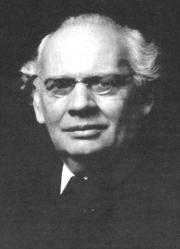Presents
Julius Röntgen
 |
 |
String Trio No.4 in D Major, "Walzer Suite"
World Premiere Edition
Julius Röntgen's String Trio No.4 in D Major was completed in 1919. For a long time, it was thought that Röntgen had only composed one string trio, his Op.76 in D Major which appeared in 1924. But it turns out that Röntgen, a highly prolific composer, wrote string trios throughout a good part of his life, and especially toward the end of it. There are at least 16 that are known of and perhaps more yet to be discovered. In the Netherlands Music Institute located in the Hague, there is a treasure trove of manuscripts by Röntgen, among them several string trios. Our edition has been carefully and faithfully edited by senior editors Lloyd Celzo and R.H.R. Silvertrust from the composer's manuscript.
Each summer, Röntgen and his family would vacation in idyllic settings near the Dutch town of Bergen by the North Sea. It was there he went to escape his duties as a professor of music and conductor. And it was there, he found relaxation by composing chamber music, which he and his family would play together during the their evenings. The Trio in a minor, was actually given the nickname "Walzer Suite" by Röntgen himself and one finds it written at the top of his manuscript. It is in six short movements, each of which resembles a modified Viennese waltz or a rustic rural peasant dance. First comes a gentle waltz, then a rather relaxed Ländler, which is followed a rather rough, almost harsh dance, perhaps an offshoot of a peasant mazurka. The fourth and fifth movements are a tonally wayward, languid Viennese waltzes. The finale and most substantial of the six movements begins in fugal fashion but eventually morphs into a peasant dance.
Julius Röntgen (1855-1932) was born in the German city of Leipzig. His father was a violinist and his mother a pianist. He showed musical talent at an early age and was taken to the famed pianist and composer, Carl Reinecke, the director of the Gewandhaus orchestra. Subsequently he studied piano in Munich with Franz Lachner, one of Schubert's closest friends. After a brief stint as a concert pianist, Röntgen moved to Amsterdam and taught piano there, helping to found the Amsterdam Conservatory and the subsequently world famous Concertgebouw Orchestra. He composed throughout his life and especially during his last 10 years after he retired. Though he wrote in most genres, chamber music was his most important area.
Parts: $19.95
Score & Parts: $27.95